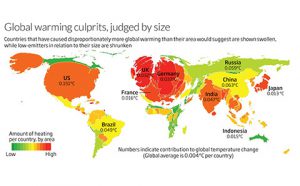A growing number of analysts familiar with the detailed state of the global oil and gas industry fear that the almost universally positive narrative about hydrocarbon supply from shale is deeply flawed, and that in fact a global oil crisis might be imminent. In December, 2013, I was part of a video-linked gathering in Washington and London of people sympathetic to this view. Those joining us included retired military officers, security experts, senior executives from a wide spectrum of industry and politicians of all the main parties, including two former UK ministers.
Mark Lewis, a former head of energy research at Deutsche Bank led off the discussion suggesting that three big warning signs in the oil industry point to a counter-narrative of impending problems for supply: high decline rates, soaring capital expenditure and falling exports.
The decline rates of all conventional crude-oil fields producing today are spectacular. The International Energy Agency projects output falling from 69 million barrels per day (bpd) today to just 28 million bpd in 2035. Current total global production of all types of oil is some 91 million bpd.
Consider the spending needed to try to fill that gap. Capital expenditure for oilfield development and exploration has nearly trebled in real terms since 2000: from $250bn to $700bn in 2012. The industry is spending ever more to prop up production, and its profitability is reflecting this trend, notwithstanding an enduringly high oil price.
Meanwhile, consumption is soaring in Opec nations. As a result, global crude oil exports have been declining since 2005. It is difficult to conflate this data and not see an oil crunch ahead, Lewis concludes.
What of the recent addition of two million bpd of new oil production from US shale: the boom that has even been cast as a “game-changer” and a route to “Saudi America” by industry cheerleaders?
Geological Survey of Canada veteran David Hughes, who has conducted the most detailed analysis of North American shale of anyone outside the oil and gas companies, offered some sobering views on this. His data shows that spectacularly high early decline rates in existing shale gas and shale oil (more correctly known as tight oil) wells means high levels of drilling are needed just to maintain production. This problem is compounded because “sweet spots” become exhausted early in field development.
As a result, shale gas production is already dropping in several key drilling regions, and production of tight oil in the top two regions is likely to peak as early as 2016 or 2017. These two regions, in Texas and North Dakota, comprise 74% of total US tight-oil production.
Like Lewis, Hughes believes that the oil and gas industry is leading the world by the nose towards an energy crisis.
In my recent book The Energy of Nations, I describe how military think-tanks have tended to side with those, like Lewis and Hughes, who distrust the over exuberant narrative of the oil incumbency. One 2008 study, by the German military, puts it thus: “Psychological barriers cause indisputable facts to be blanked out and lead to almost instinctively refusing to look into this difficult subject in detail. Peak oil, however, is unavoidable.”
This blanking-out extends to the mainstream media, which has enthusiastically echoed the mantras of the oil companies, to the extent that the very words “peak oil” have been positioned as a badge of baseless scaremongering.
We should never forget that in the run-up to the credit crunch, the financial incumbency deployed exactly the same PR tactics against those warning about the fragility of mortgage-backed securities.
I do believe that there can be a road to renaissance, in the rebuilding after the coming crisis. We have to nurture clean energy industries, and strategies, and accelerate them as though mobilising for war.







